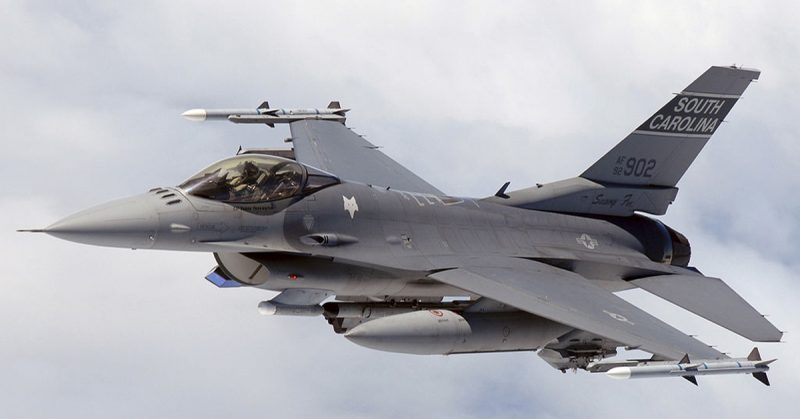Originally designed to give the United States Air Force (USAF) superiority in the air, the F-16 Fighting Falcon has developed into a multi-role aircraft fighting around the world.
Development
During the 1960s, the USAF was forced to rethink its approach to fighter combat. Experiences in Vietnam showed that they needed air superiority fighters to retain control of the skies. Various groups within the military industry started working on designs, using new theories about how to achieve the best maneuverability.
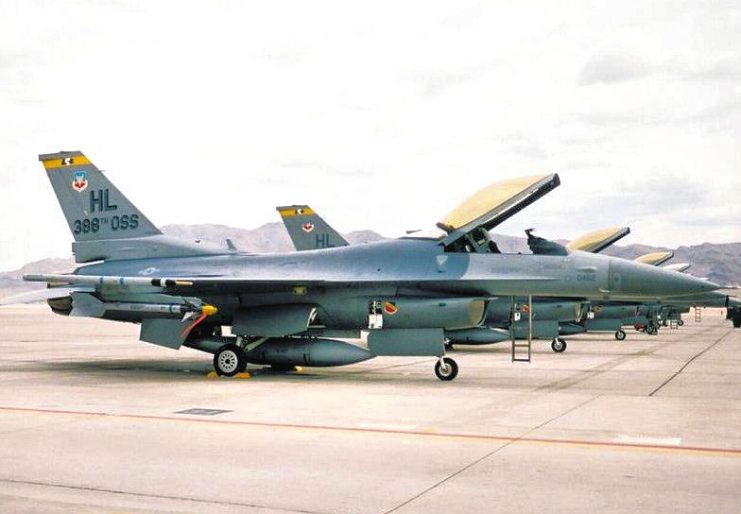
Of five companies that put forward designs to become the USAF’s new fighter, two became finalists. General Dynamics’ YF-16 finally won out after a competition in which every single test pilot said they preferred it to the alternative.
After another year of redesign and improvement, the re-named F-16 first rolled off the assembly line in October 1976. Further testing and training followed before the plane was accepted for service by the USAF in January 1979. It entered operational service the following year.
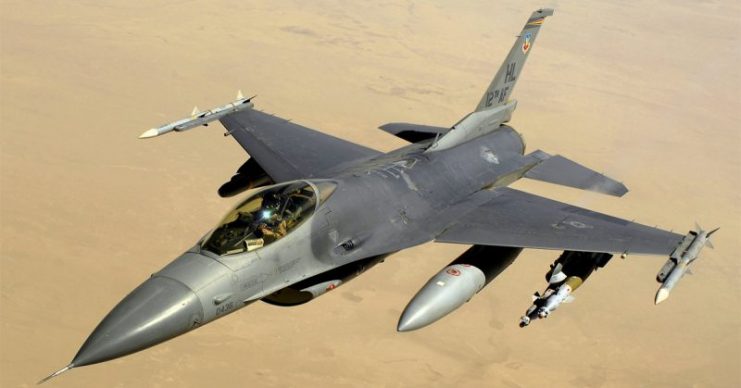
In 1993, General Dynamics sold its aircraft manufacturing wing to Lockheed. The F-16 is now produced by Lockheed Martin, a company formed in a merger two years after the sale.
The USAF no longer buys F-16s but Lockheed Martin still builds them for export. F-16s are used in 25 countries, making it one of the most numerous fixed-wing combat aircraft in the world.
Features of the F-16
The F-16 is a smaller single-engined jet fighter than those that preceded it. Designed as a cost-effective alternative to other fighters in use by the USAF, it is relatively cheap and easy to maintain – though only by the standards of fighter jets. With an airframe built mostly out of aluminum alloys, it is light and maneuverable.
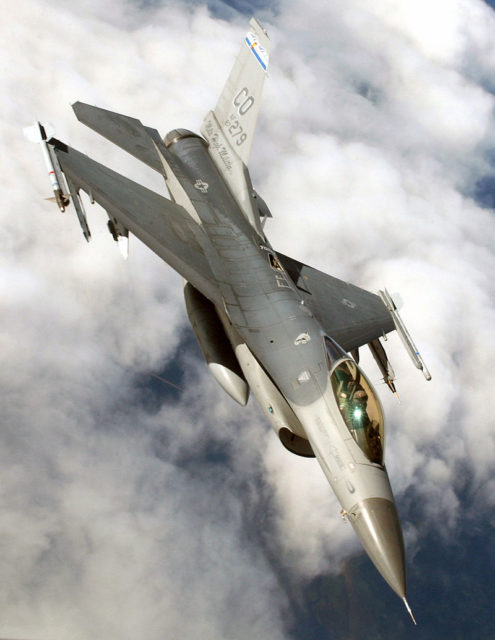
Influenced by the latest developments in the study of aerodynamics, the plane’s designers gave it strongly swept wings. These let it reach higher attack angles thanks to the effect of vortex lift, in which the wing shape creates and traps vortices of air. These generate lift, allowing angles of attack that would stall other aircraft.
The cockpit is covered by a frameless bubble canopy, which provides excellent visibility for the pilot. To reduce the effect of g-forces, the seat reclines 30°, providing a more comfortable ride.
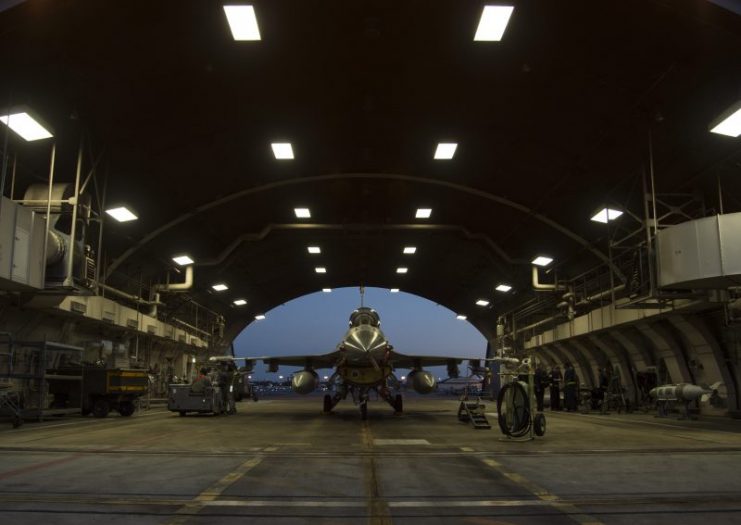
The F-16 was the first fighter to use a relaxed static stability/fly-by-wire system. This means that stability is sacrificed in favor of maneuverability, with electronic systems compensating for the loss. Control is made easier by a side-mounted control stick. Augmented pitch control is used to avoid stalling during high angled attacks.
The F-16 has one internally mounted weapon, an M61 Vulcan rotary cannon. Its six air-cooled barrels let this weapon fire around 6,000 of its 20mm rounds per minute. Other weapons can be fitted on 11 mounts, allowing the plane to carry missiles and mission equipment.
F-16s usually carry air-to-air missiles. Early models were fitted with AIM-9 Sidewinders and radar-guided AIM-7 Sparrows, while more recent planes have often been given AIM-120 AMRAAMs. The plane can also carry bombs, air-to-ground missiles, and other support equipment such as extra fuel tanks.
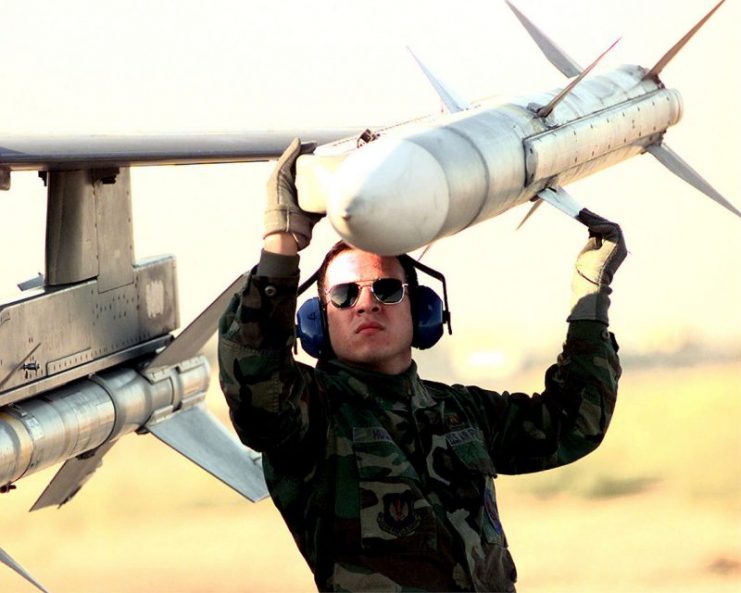
The F-16 in Action
The F-16 has been used by the USAF in all its major engagements since the early 1980s.
During Operation Desert Storm in 1991, F-16s flew thousands of combat missions against Iraqi targets, dropping millions of pounds of bombs. In the aftermath of the war, they were used to patrol the no-fly zones over the north and south of the country. Other duties in the 1990s included service in the Balkans, as the US intervened in the fighting in former Yugoslavia.
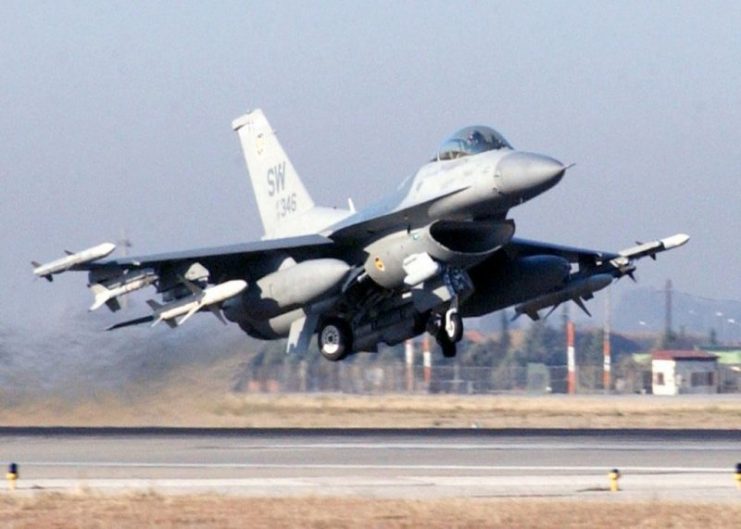
In the 21st century, F-16s have been used by the USAF in the invasions of Afghanistan and Iraq and in the 2011 intervention in Libya. For a nation whose military doctrine relies heavily on strategic bombing and aerial superiority, the adaptable F-16 has proved an invaluable asset.
But while the USAF were the minds behind the F-16, they weren’t the first to use it in combat.
The F-16’s first combat successes came at the hands of Israeli pilots in 1981. In April that year, an Israeli Air Force (IAF) F-16 shot down a Syrian Mi-8 helicopter over the Bekaa Valley, the F-16’s first air-to-air kill.
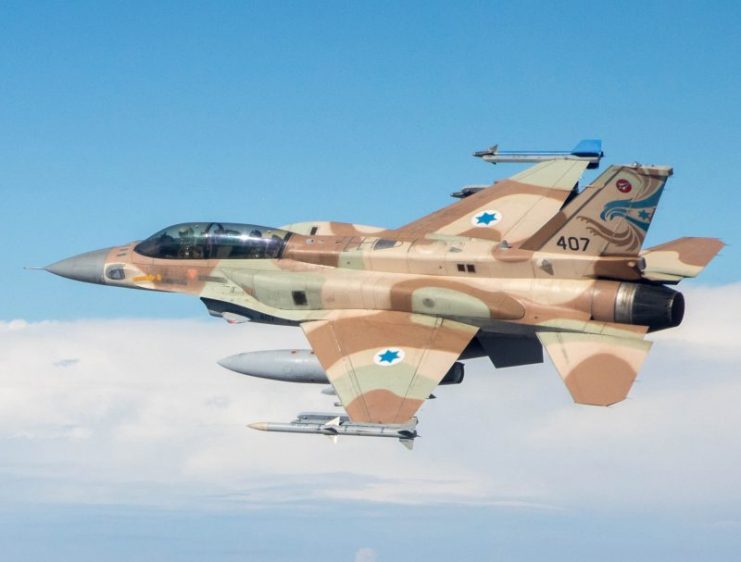
Less than two months later, eight F-16s took part in their first air-to-ground operation. This was Operation Opera, a surprise attack by the IAF against a nuclear reactor being built in Iraq. The operation achieved its objective, effectively halting Iraq’s nuclear energy program and driving much of its weapons development underground. It also caused international outrage and raised tensions in the region. The effectiveness of the operation is still debated today.
In 1982, the F-16s brought more successes for the IAF during the Lebanon War. From the 9th to the 11th of June, they took part in one of the largest battles between jet planes, fighting against the Syrian Air Force. Over the course of the conflict, they took out 44 enemy aircraft.
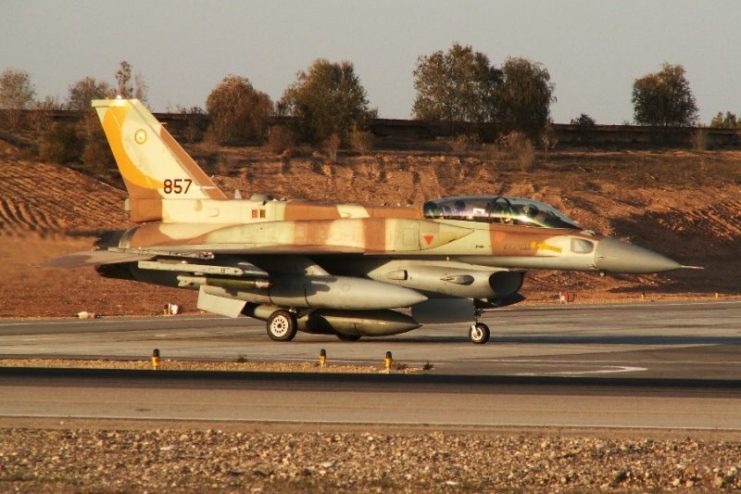
During the late 1980s, the Pakistani Air Force used F-16s to tackle intruders crossing the border from Afghanistan during the Soviet invasion. They shot down at least eight enemy aircraft, losing only one F-16. Most of these successes were achieved using Sidewinders.
This century, Pakistan has used its F-16s against Taliban forces in the north of the country. Thousands of sorties have been flown against the rebels, most of them using laser-guided bombs.
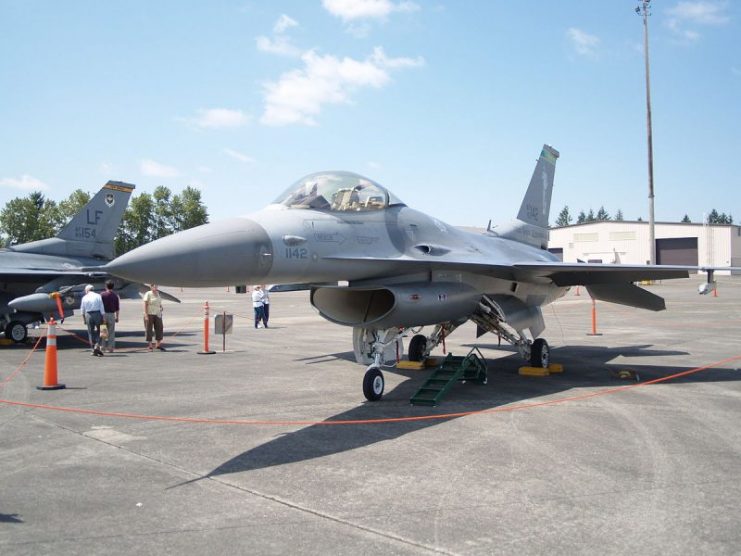
Read another story from us: Epic Warplanes: The Awesome Lockheed Martin F-22 Raptor
Turkey has successfully deployed its F-16s against Kurdish rebels and along the border with Syria, where they have shot down planes allegedly entering Turkish airspace from the ongoing civil war. The Turkish Air Force also uses F-16s to patrol the border with Greece. Tense stand-offs with Greek pilots have resulted in the loss of two F-16s, one in a collision, the other allegedly shot down by a Greek plane.
After four decades of service, the F-16 continues to be an effective weapon and a useful tool in wars around the world.
